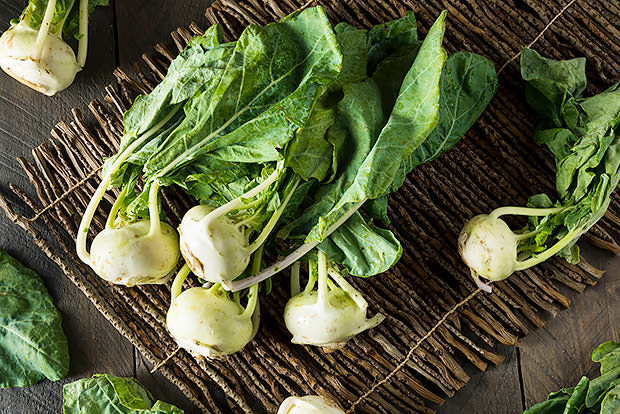
When nutritious vegetables are at their peak ripeness, they offer delicious flavors that make healthy eating much more enjoyable. Unfortunately, many growing seasons are short, so add some of these spring vegetables to your shopping cart while you can.
Kohlrabi
Kohlrabi is often referred to as a German turnip, but it has a much milder flavor than the turnips you might be familiar with in the United States. Kohlrabi is related to broccoli and cabbage, which means that it contains the same cancer-fighting glucosinolates that are associated with cruciferous vegetables. The bulb of the kohlrabi can be green or purple. While it can be roasted, kohlrabi is delicious raw. Shred it and add it to slaws and salads, or cut it into sticks or slices to use as a vegetable dipper.
Leeks
Leeks are related to garlic and onions, and they look like larger versions of spring onions. Leeks contain polyphenols that protect against disease, and they supply vitamin K and manganese. This vegetable can be used in any recipe that uses garlic and onions. Add it to a quiche or potato soup. Both the greens and the bulb are edible, but there is evidence that the health-promoting flavonoid kaempferol is more concentrated in the lower leaves and bulb.
Mustard Greens
Mustard greens are loaded with vitamin K and contain vitamins A and C, copper manganese, and calcium. They are another member of the cruciferous family and also contain disease-fighting glucosinolates. Research shows that steamed mustard greens may also help to lower cholesterol. Add chopped mustard greens to your stir fry or stir them into a pot of soup.
Parsley
Research shows that the components of parsley may help to ward off the effects of carcinogens, which are linked to cancers. The flavonoids in parsley act as antioxidants to protect against cell damage. Parsley contains vitamins A, C, K, and folate, as well as iron. Stir chopped fresh parsley into dressings, marinades, salsas, and salads.
Endive
Endive is a lettuce-like vegetable that grows in small heads that can either be yellow or red. Endive provides vitamins B, C, K, and folate. It also supplies potassium, calcium, magnesium, iron, zinc, and selenium. Endive’s small firm leaves can be used to scoop healthy dips like hummus, or you can top them with healthy fillings for an easy-to-serve appetizer. Try these Tuna and Chickpea Endive Bites.



 3 Healthy Lunches for Your Work Week
3 Healthy Lunches for Your Work Week
 5 Tips for Stretching Your Budget for Healthy Food
5 Tips for Stretching Your Budget for Healthy Food
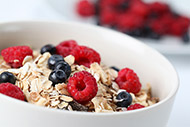 Best Ways to Reduce Added Sugar
Best Ways to Reduce Added Sugar
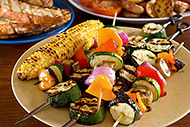 Healthy Tips to Lighten Up Picnic Foods
Healthy Tips to Lighten Up Picnic Foods
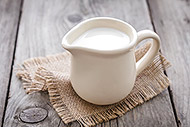 Do You Need to Drink Milk?
Do You Need to Drink Milk?
 Tips to Keep Track of Water Intake
Tips to Keep Track of Water Intake
 Ways to Hydrate
Ways to Hydrate
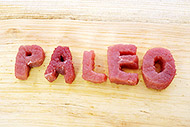 What Is a Paleo Diet?
What Is a Paleo Diet?

 Pinterest
Pinterest RSS Feed
RSS Feed